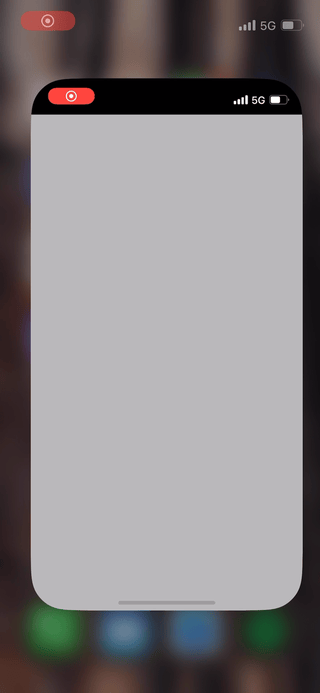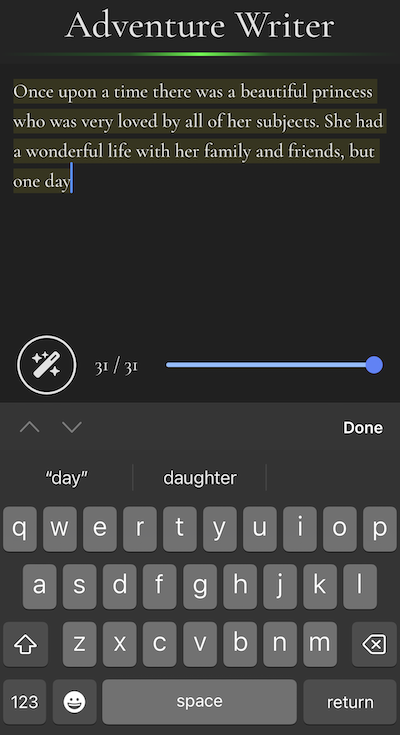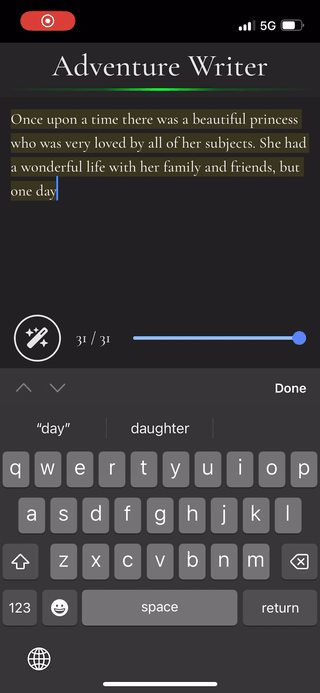Adventure Writer
Summary
As this year’s first side project, I decided to make an Adventure Writer that lets people write AI-assisted adventures. If you want to give it a try, visit: http://knandersen.github.io/adventure-writer/
Demo recording of Adventure Writer at 2x speed
In this post dive into why I chose this project, thoughts behind the design, technical implementation and details, and how I could continue the work.
Background
For the past few years, as also mentioned in last week’s post, I have been curious about the synergy of human and machine intelligence, especially in creative work. With the emergence of readily available large-language models (LLMs), it’s never been easier to experiment with new experiences and interactions.
The goals I had for this project:
- Become more familiar with LLMs, prototyping with OpenAI models
- Improve my front-end development skills by learning Svelte
- Play with the interaction design
Concept
Adventure Writer is fairly simple:
- A few starting lines is generated by AI
- You continue writing
- You can request a couple more sentences from the AI if desired
- Repeat 2.-3.
It’s a speculation on how machine intelligence may be able to help you stay in flow so you spend less time creatively blocked, while maintaining creative control.
Interaction Design
I initially developed Adventure Writer for the desktop browser since that allows me to share the prototype anywhere easily. The core interaction with the AI should be effortless and minimally disruptive to the writing flow. To me that meant using a keyboard key for interaction, but it shouldn’t be too complex or use a character used in the writing. Since it’s usually used to switch between interaction elements rather than a text entity, I decided to use the Tab-key.
But once I sent the first prototype to a friend, his first reaction was “oh cool, but doesn’t work on my phone, so I guess I’ll try it at home”. It was a little embarrasing. After a decade of mobile-first development, I should know better. I’m continuously impressed how many typing activities are increasingly possible on mobile, like coding using Repl.it Mobile
So I switched strategy to enable a mobile experience, but this introduced a new challenge - there’s no Tab-key on the phone virtual keyboard, or other unused keys that could be used instead. My solution is to put a floating button right above the keyboard that triggers the AI generation.
Screenshot of mobile interface controls
On desktop, typing interactions like deleting a few word or lines are easy, but unfortunately on mobile they’re not. My solution to this is to add a slider that allows you to scale the amount of AI-generated text you’d like to keep.
Slider interaction
Although it’s a bit buggy due to lack of native ability to detect the on-screen keyboard or align things to it, I’m happy with this highly “thumbable” mobile interaction design concept.
Technical implementation
To retrieve AI-generated text, I use OpenAI’s GPT-3 Text Completion model. I initially used the most capable, but also slower and more expensive Davinci model, but at the time of writing using the faster and cheaper Curie, which seems to be more than capable for this concept. To use the OpenAI API, I wrote a Node.js server that I run on a free Render instance.
When starting the adventure, I send OpenAI the prompt: Start a fictional fairytale story:. When asking to generate additional content I send the prompt: Continue this story:<TEXT> with <TEXT> being what’s been typed so far.
For the website itself, everything is written in Svelte.
Ideas for improvement
This was mostly meant to be a quick and fun learning and prototyping exercise. But if I were to continue the work, here are a few ideas that would be worth exploring:
- Enable cycling through multiple suggestions instead of just one
- Fine-tune the AI model on adventures
- Provide AI story analysis, i.e. is this a “good” adventure?
Reflections on process
It’s generally been fun getting my hands dirty with GPT and Svelte. On the other hand, it was very frustrating spending a disproportionate amount of time debugging weird CSS/HTML/JavaScript issues across the mobile and desktop implementation.
I would rather spend the time doing creative exploration, so for future work, I’ll consider either dropping mobile, sharing demos as videos rather than working prototypes or build native apps. Neither seem optimal to me, so will keep thinking about this.